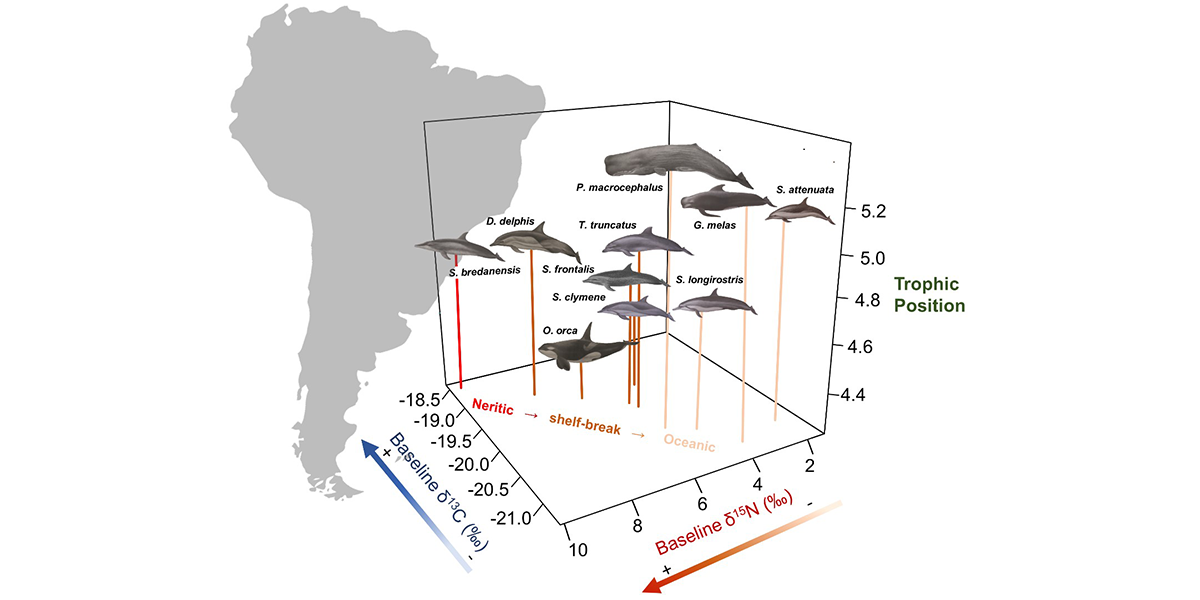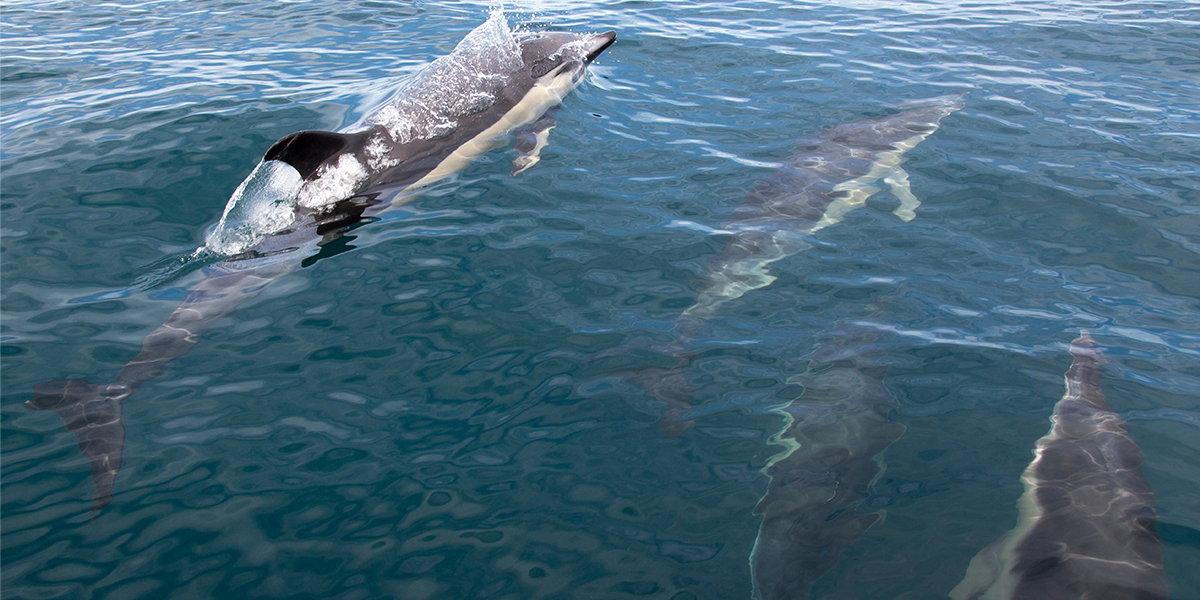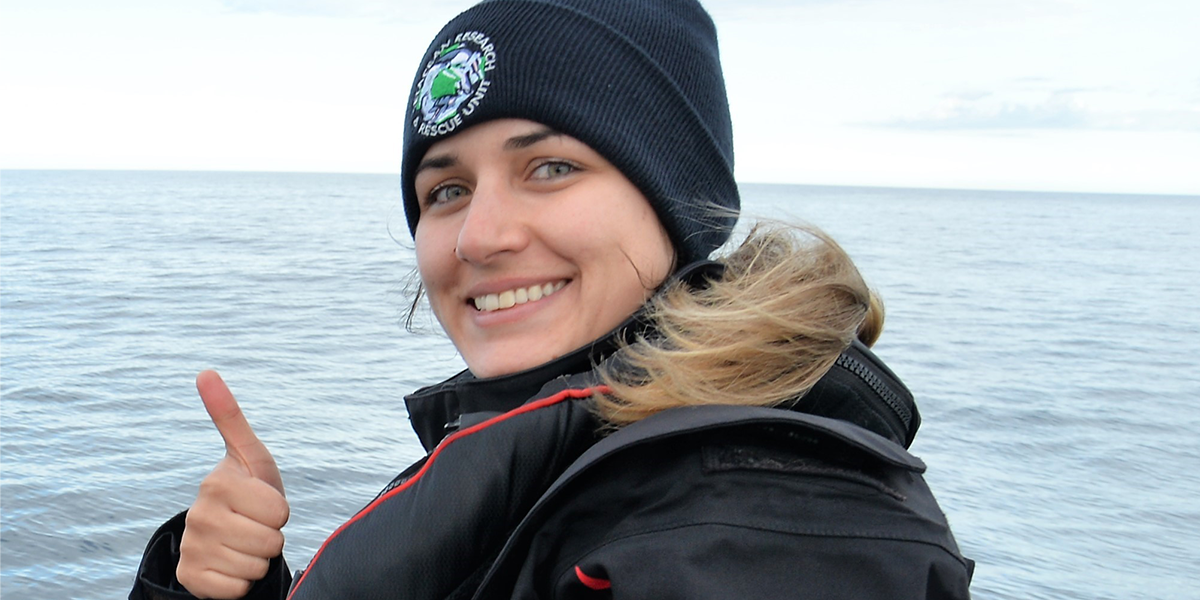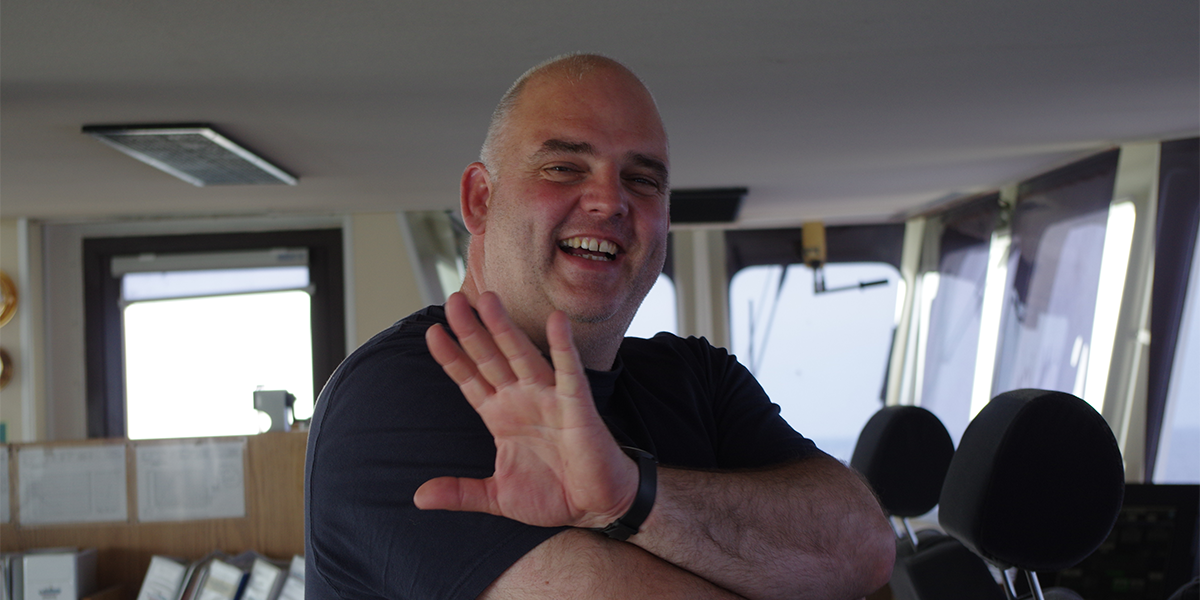Dolphin species that live together, do not necessarily compete for food
Little is still known about the food and food search behaviour of toothed whales. What we know historically, is primarily derived from the stomach content of dead specimens. However, this makes it hard to actively study them in their natural habitat: you can’t do more than wait for animals to wash ashore. Consequently, proper ecological research on how various species of sea mammals influence one another in their choice for food, is quite difficult, as you cannot observe the animals at the large depths at which they hunt.

Neither top predator nor overlap in food
For this problem, researchers of the Universidade Federal do Rio Grande and the Royal NIOZ, Netherlands Institute for Sea Research, found a solution. They used so-called stable nitrogen isotopes of amino acids in small pieces of skin tissue from living sperm whales, orca and eight dolphin species in the Southwestern part of the Atlantic Ocean, off the coast of Brazil.
“It was known that there were slight differences in food preference in for example fish or squid”, says researcher Marcel van der Meer. “However, according to previous research, the rough-toothed dolphin Steno bredanensis was supposed to be the absolute top predator of the area, and that is unlikely. With our amino acid isotope research, we discovered that its trophic level is indeed significantly lower than previously determined.”
Apart from that, the method used before, suggested great overlap in food of three of the dolphin species. Van der Meer “We now know that there isn’t any overlap whatsoever. The short-beaked common dolphin Delphinus delphis, turns out to hunt at a different depth in shallow water, while the Atlantic spotted dolphin Stenella frontalis and the common bottlenose dolphin Tursiops truncatus hunt in waters up to depths of 500 meters. The latter two species, that thus feed at the same depth, have different prey. Apparently, the dolphin species have found a way to live together without competing for food."

Correcting for the noise
In this research project, first author Genyffer Troina (Federal University of Rio Grande, Brazil) visited the NIOZ on Texel to work on her samples with Marcel van der Meer and his colleague Philip Riekenberg. It is an improvement of more commonly used isotope analysis (see frame), however uses nitrogen in free amino acids instead of in the tissue as a whole. They use the nitrogen isotopes of the amino acid phenylalanine, a building block of every living cell that, after uptake by plant eaters, is passed through the food web almost unchanged up to the level of top predators.
Using the nitrogen isotope value of this amino acid, the scientists can, as it were, determine the base value of the nitrogen in the environment. That enables them to correct for the ‘noise’ that is caused by an unknown living environment in which researchers cannot measure the nitrogen value themselves. By comparing the base value with the value in the sea mammal they are studying, they are able to determine the trophic level of the species, meaning what its position is in taking up the amino acids. A plant would be level one, a top predator may be level 5.

Samenlevende dolfijnsoorten ontwijken competitie om voedsel
Via een nieuwe moleculaire methode wordt bekend hoe verschillende soorten tandwalvissen met elkaar concurreren om prooien en welk voedsel ze in elkaars nabijheid kiezen. Marien onderzoekers van NIOZ publiceerden hun werk afgelopen week in het wetenschappelijke magazine Environmental Research.
Nog steeds is maar weinig bekend over het voedsel en voedselzoekgedrag van tandwalvissen. Wát we historisch weten over hun eten, komt vooral van de maaginhoud van dode dieren. Maar op die manier kun je niet gericht op zoek naar informatie: het is maar afwachten welke dieren waar aanspoelen. En echt ecologisch onderzoek naar hoe verschillende soorten zeezoogdieren elkaar beïnvloeden in voedselkeuze, is helemaal ondoenlijk. Het is nu eenmaal lastig of zelfs onmogelijk om dieren te observeren op de grote dieptes waar ze jagen.
Geen toppredator of overlap in voedsel
Onderzoekers van het Koninklijk NIOZ, Nederlands Instituut voor Onderzoek der Zee, hebben daarvoor nu een oplossing gevonden. Ze gebruiken zogeheten stabiele isotopen van het atoom stikstof, in aminozuren uit kleine stukjes huidweefsel van levende potvissen, orka’s en acht soorten dolfijnen in het zuidwesten van de Atlantische Oceaan, voor de kust van Brazilië.
“Dat de ene soort net iets meer vis eet en de andere net iets meer inktvis, was bekend”, zegt NIOZ-onderzoeker Marcel van der Meer. “Maar op basis van eerder onderzoek leek bijvoorbeeld de snaveldolfijn Steno bredanensis de absolute toppredator van in dit gebied te zijn. Dat is onwaarschijnlijk. Met ons aminozuur-isotopenonderzoek ontdekten we nu dat zijn trofisch niveau inderdaad een stuk lager is dan tot nu toe was vastgesteld.”
Verder zou er volgens de eerder gebruikte methoden grote overlap zitten in voedsel van drie van de soorten dolfijnen. “We weten nu dat die overlap er helemaal niet is”, aldus Van der Meer. “De gewone dolfijn Delphinus delphis blijkt in ondiep water te jagen, terwijl de Atlantische vlekdolfijn Stenella frontalis en de tuimelaar Tursiops truncatus jagen in water tot 500 meter diep. En die laatste twee dolfijnsoorten zoeken op dezelfde diepte naar verschillende prooien. Blijkbaar hebben de dolfijnensoorten zo een manier gevonden om in elkaars nabijheid te leven zonder elkaar te beconcurreren om voedsel.”
Corrigeren voor de ruis
Eerste auteur Genyffer C. Troina (Federal University of Rio Grande in Brazilië) kwam speciaal naar het NIOZ op Texel om samen met Marcel van der Meer en zijn collega Philip Riekenberg deze moleculaire methode toe te passen op haar monsters. Het is een verbetering van al gebruikte isotopenanalyse (zie kader), maar maakt gebruik van stikstof in losse aminozuren in plaats van in het hele weefsel. Ze gebruiken de stikstofisotopen in het aminozuur fenylalanine, een bouwsteen van iedere levende cel die na opname door planteneters grotendeels onveranderd wordt doorgegeven tot aan toppredatoren.
Met de stikstofisotopenwaarde van dit aminozuur kunnen ze als het ware de basiswaarde van de stikstof in het milieu vaststellen. Zo kunnen ze corrigeren voor de ‘ruis’ die ontstaat door een onbekende leef- en eetomgeving. Door de basiswaarde te vergelijken met de waarde in het onderzochte zeezoogdier, is het trofische niveau van de soort vast te stellen, dat wil zeggen als hoeveelste in rij hij het aminozuur binnenkrijgt. Een plant is nummer 1, een toppredator nummer 5.
Publication
Genyffer C. Troina, Philip Riekenberg*, Marcel T.J. van der Meer*, Silvina Botta, Frank Dehairs, and Eduardo R. Secchi
* Affiliated to Royal NIOZ
Combining isotopic analysis of bulk-skin and individual amino acids to investigate the trophic position and foraging areas of multiple cetacean species in the western South Atlantic
Environmental Research, available online 2 July, DOI

Isotope Analysis
Research with stable isotopes goes roughly like this. A small part of the atoms like nitrogen (N) that occur in every living cell, is a little bit heavier than the rest. As an animal ingests the nitrogen with its food, digestion (metabolism) separates the heavy atoms a tiny bit slower than the light ones, with the result that the heavy atoms are taken up into the body tissue of the animal more often than the light version. This pattern of uptake piles up: the higher an animal is in the food web, the more heavy N-atoms in its body tissue.
However, to be able to guarantee the accuracy of the method, you must know the isotope level of the original food. In marine environments, this value - most often of algae – is difficult to determine and may also vary a lot. The amino acid isotope method solves that problem.